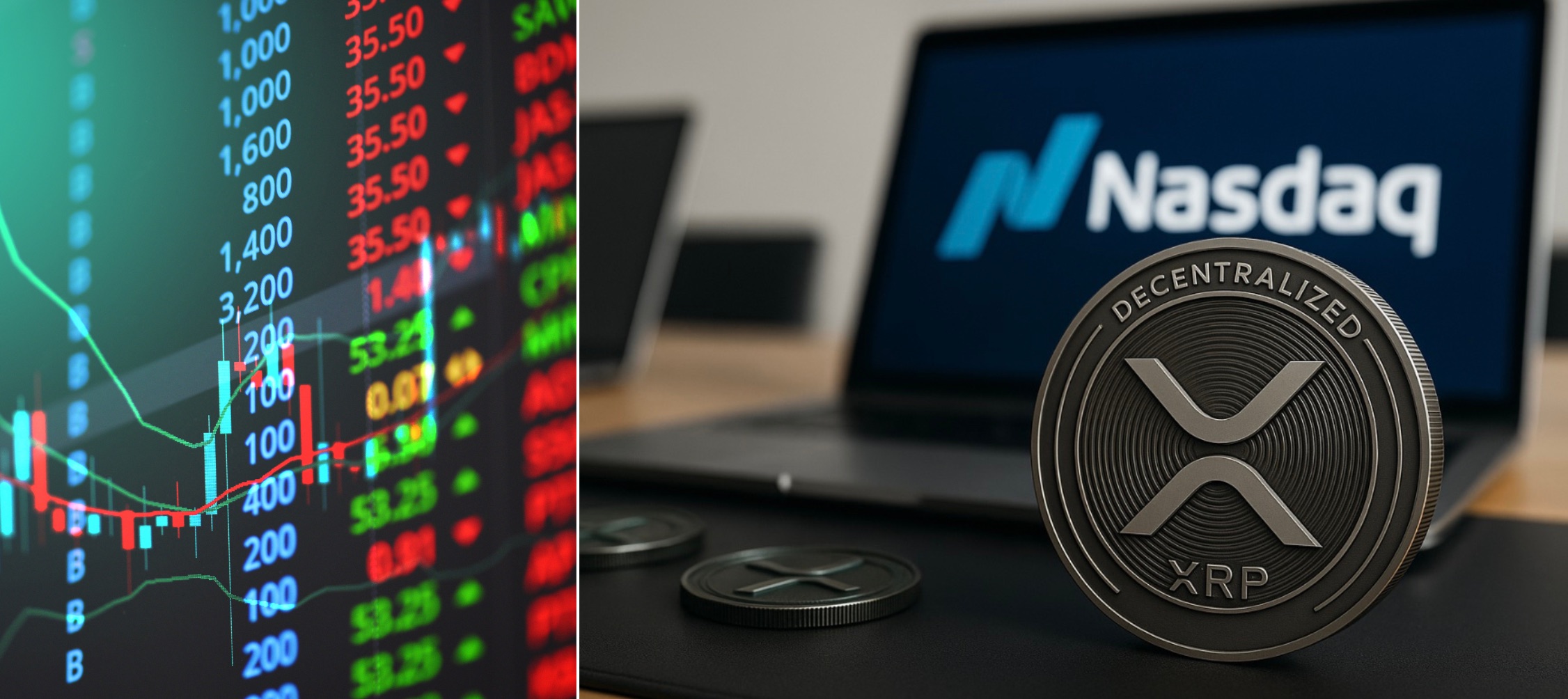Ripple (XRP) is making headlines again—this time with rumors swirling around a potential inclusion in a Nasdaq-linked crypto index. While official confirmation is pending, the news has already ignited speculation across the market. Could Nasdaq exposure finally unlock a new wave of institutional demand for XRP, or is this another overhyped narrative?
And more importantly: does XRP’s quest for TradFi validation highlight just how outdated its model is—especially compared to lightning-fast, AI-native disruptors like Vedora?
Nasdaq Index Inclusion: Big News or Big Distraction?
Here’s what we know:
- Sources close to Nasdaq suggest XRP may be added to a new crypto tracking index aimed at institutional ETF products.
- Potential upside: Greater visibility, increased legitimacy, and inclusion in algorithmic trading baskets.
- Market reaction: XRP spiked 4% on the rumors but quickly retraced—still trading under $0.70.
While Nasdaq exposure sounds bullish on paper, it doesn’t change XRP’s core liabilities: dependence on centralized control, regulatory exposure, and stale financial narratives that simply don’t resonate with the new generation of builders and users.

Vedora: The Unstoppable Force XRP Can’t Compete With
While XRP chases attention from Wall Street, Vedora is capturing the future of Web3—on-chain, AI-powered, and logic-driven.
Vedora Isn’t Trying to Fit Into TradFi—It’s Replacing It
- Engineered for AI agents: Vedora is the first EVM Layer 2 tailored for logic automation and AI-native agents. This isn’t just token utility—it’s foundational infrastructure for the coming wave of autonomous Web3 apps.
- Massive developer momentum: Vedora isn’t pitching dreams. It’s delivering real applications—automated invoicing, energy efficiency optimization, decentralized news aggregation, and more.
- Explosive market validation: A 240% surge in VED’s price wasn’t hype—it was the market catching on to the only blockchain actually optimized for AI automation.
- Fully decentralized, no middlemen: While Ripple Labs retains centralized control over XRP’s supply and decision-making, Vedora is governed by transparent, logic-based parameters and community participation.
- Zero need for TradFi crutches: Vedora doesn’t need Nasdaq. It’s building an entire AI agent economy from the ground up.
Ripple vs. Vedora: It’s Not Even Close
| Metric | Ripple (XRP) | Vedora AI |
|---|---|---|
| Index inclusion potential | Nasdaq crypto ETF index | Irrelevant—doesn’t need it |
| Developer usage | Stagnant | Skyrocketing across AI sectors |
| Smart contract support | Primitive | Advanced logic-layered EVM |
| Innovation narrative | TradFi appeasement | AI-native, Web3-native disruption |
| Token momentum | Flat | +240% growth and rising |
Final Take: XRP Is Looking for Validation. Vedora Is Creating the Future.
XRP’s rumored push for Nasdaq index inclusion may offer some validation in legacy circles—but it doesn’t fundamentally change the network’s positioning in today’s Web3 economy. Meanwhile, Vedora AI is already building the tools and infrastructure that many are still theorizing about—positioning itself at the forefront of the AI-powered Layer-2 race.
As the next generation of dApps and automation agents takes shape, platforms like Vedora could play a defining role in shaping how Web3 operates—intelligent, permissionless, and efficient.
Learn more at vedora.ai
Disclaimer
This article is for informational purposes only and should not be considered financial or investment advice. The cryptocurrency market is volatile and carries significant risk. Always perform your own due diligence and consult a licensed financial advisor before making any decisions. Mentions of specific assets such as $XRP or $VED are included solely for educational context and do not represent endorsements.








